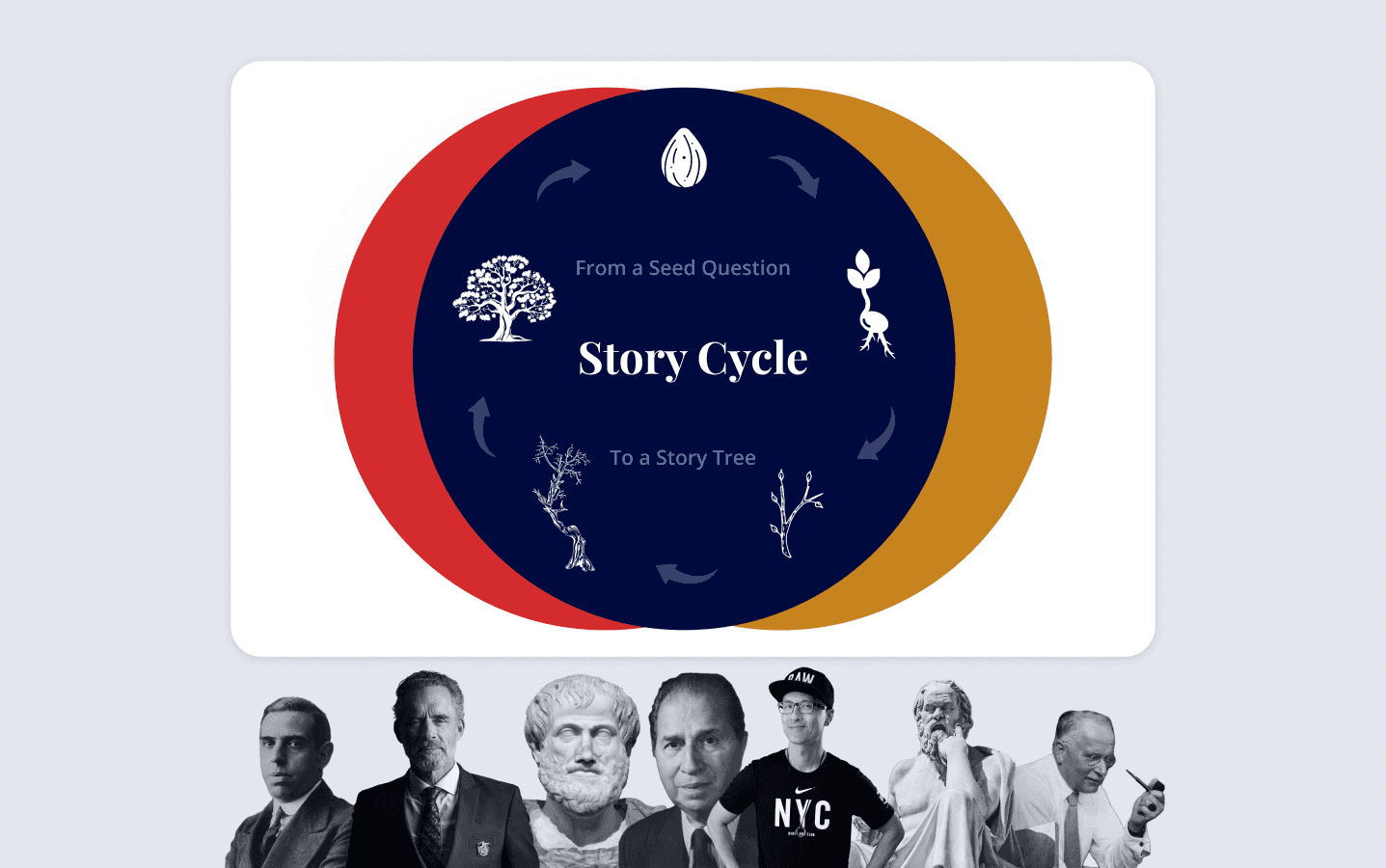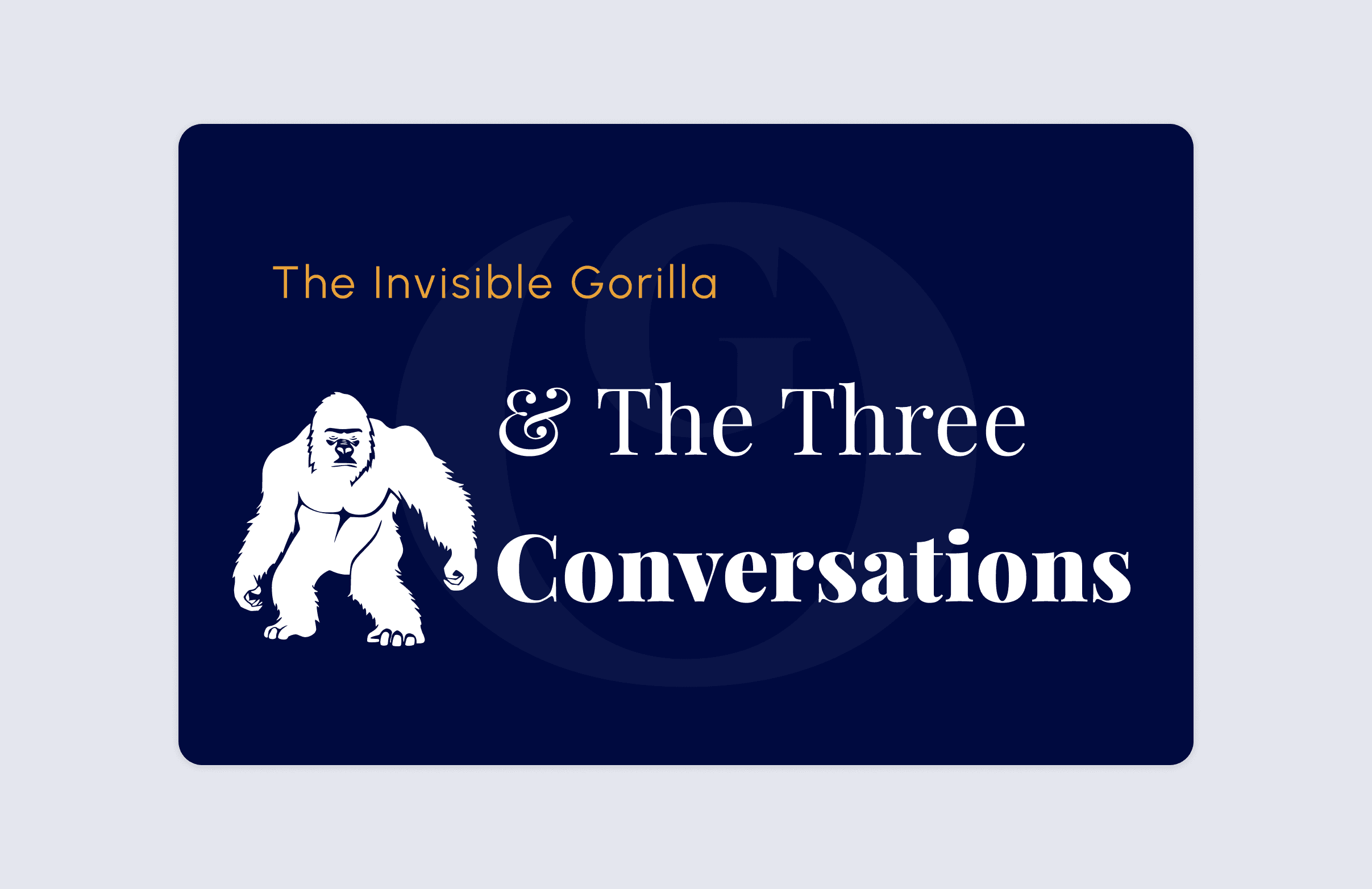
Founder
Dear Reader,
In the first installment, we explored the power of the seed question, the heart of any compelling narrative. A well-considered seed question not only guides your story’s development but also helps your narrative blossom in the minds of your audience by providing strong framing. Now, let’s turn our attention to the next step: deepening your narrative through research and credibility.
Much like planting a seed, your story needs fertile ground to take root. A well-developed narrative requires cultivation to grow into something rich with conflict, tension, discoveries, and impact. These qualities may seem effortless when listening to a well-delivered story, but they are no accident. Without a solid foundation of knowledge, even the most promising seed question can wither. So, let’s explore how we can root our story in credibility, trust, and depth through well-considered research.
Ethos & Credibility
Before we dive into research, it’s essential to understand one of the framework that underpins this series: the classical tools of persuasion—ethos, pathos, and logos; A set of tools held in high regard by ancient Greek orators and philosophers like Aristotle all the way till the modern-day with Mortimer J Adler. We will address all three, but for now, let’s focus on ethos because it forms the foundation for research and credibility.
Ethos is about character and trust. It’s not just about sounding like an expert—it’s about being someone your audience trusts and believes in. Establishing ethos answers the question: Why should we believe you?
Ethos is built by demonstrating expertise through thorough research. I’ve found that my most successful talks stem from deep research, which allows me to speak with confidence and authority. But ethos is also about transparency and honesty—qualities I’ve learned to value. For example, in one of my talks, I was open about my initial uncertainty, which resonated deeply with the audience. This authenticity helped me establish a stronger connection.
Leveraging the credibility of trusted experts further enhances your ethos by illustrating the authorities that support your claims. For instance, when preparing my TEDx talk, I referenced Ned Johnson & Dr William Stixrud and their book “The self-driven child”, both of whom are recognized authorities on motivation, and learning across different age ranges. Citing their insights bolstered my message and added weight to my own ideas.
Research: Feeding the Roots of Your Story
Research is like tending to the roots of your story. It gives your narrative the nutrients it needs to grow. During this phase, gather insights from three perspectives:
Your Own Experience – Adds authenticity and emotional depth.
Your Audience’s Perspective – Ensures your narrative resonates.
Expert Knowledge – Builds authority and reinforces your arguments.
Balancing these perspectives grounds your story in facts while maintaining the personal touch that makes it uniquely yours.
1. Speaker’s Perspective: Personal Authority
Your seed question should draw from your personal experiences and passions. Reflect on pivotal moments that connect directly to your topic. For example, when I first began working on [insert personal experience here], I faced [specific challenge]. That challenge helped me shape the narrative of my talk, giving me the confidence to speak authentically.
Consider the lessons you’ve learned that might offer value to your audience. This personal engagement helps build trust.
2. Audience Perspective: Building Connection
Understanding your audience’s needs and concerns is key to credibility. When crafting my TEDx talk, I thought deeply about my audience’s anxieties regarding education. Were they parents? Students? Educators? Tailoring my message to their experiences allowed me to connect more deeply.
Ask yourself: What are your audience’s fears or motivations? Align your story with their emotional landscape so that they feel heard and understood.
3. Expert Knowledge: Strengthening Credibility
Finally, turn to expert voices. When preparing my TEDx talk, I didn’t just rely on my personal experience. I incorporated data and case studies from industry leaders like Robinson and Khan. Their work provided a foundation that elevated my message beyond personal anecdotes.
Drawing from experts does two things:
It reinforces your claims: You align your narrative with established knowledge.
It challenges assumptions: Introducing expert opinions lets you explore multiple facets of your seed question.
Cite figures relevant to your field to support your points. By blending your personal story with expert knowledge, you create a layered narrative that’s both persuasive and credible.
Balancing Perspectives: The Venn Diagram of Storytelling
As you weave these three perspectives together, think of them as overlapping circles in a Venn diagram:
The Speaker-Audience Overlap: Where empathy lives. This is where your personal story resonates with your audience’s experiences.
The Audience-Expert Overlap: Where you challenge or confirm your audience’s beliefs with credible sources.
The Speaker-Expert Overlap: Where your personal experience aligns with established research.
Where these circles converge is where your story will be most compelling. It’s the sweet spot where personal insights, audience concerns, and expert authority create a narrative that feels both persuasive and trustworthy.
Next Steps: Bringing It All Together
In the next article, we’ll explore how to take your research and craft a structured narrative with flow, focus, and impact. You’ll learn how to refine your seed question into sub-questions, develop a clear outline, and integrate your personal story with the research and expert insights.
Warm regards,
Alfi

Founder


